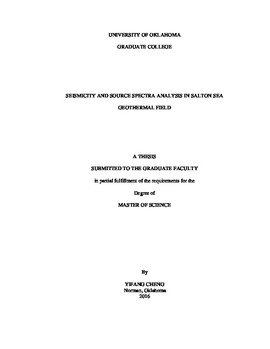| dc.description.abstract | The surge of “man-made” earthquakes in recent years has led to considerable concerns about the associated hazards. Improved monitoring of small earthquakes would significantly help understand such phenomena and the underlying physical mechanisms. In the Salton Sea Geothermal field in southern California, open access of a local borehole network provides a unique opportunity to better understand the seismicity characteristics, the related earthquake hazards, and the relationship with the geothermal system, tectonic faulting and other physical conditions. We obtain high-resolution earthquake locations in the Salton Sea Geothermal Field, analyze characteristics of spatiotemporal isolated earthquake clusters, magnitude-frequency distributions and spatial variation of stress drops. The analysis reveals spatial coherent distributions of different types of clustering, b-value distributions, and stress drop distribution. The mixture type clusters (short-duration rapid bursts with high aftershock productivity) are predominately located within active geothermal field that correlate with high b-value, low stress drop microearthquake clouds, while regular aftershock sequences and swarms are distributed throughout the study area. The differences between earthquakes inside and outside of geothermal operation field suggest a possible way to distinguish directly induced seismicity due to energy operation versus typical seismic slip driven sequences. The spatial coherent b-value distribution enables in-situ estimation of probabilities for M≥3 earthquakes, and shows that the high large-magnitude-event (LME) probability zones with high stress drop are likely associated with tectonic faulting. The high stress drop in shallow (1-3 km) depth indicates the existence of active faults, while low stress drops near injection wells likely corresponds to the seismic response to fluid injection. I interpret the spatial variation of seismicity and source characteristics as the result of fluid circulation, the fracture network, and tectonic faulting. | en_US |
